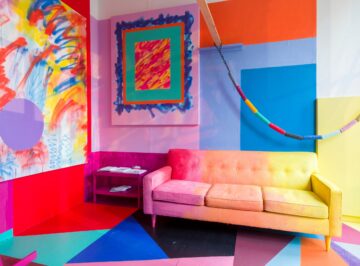Artist Bio
Born 1979 in Albany, NY; lives and works in Los Angeles
Sarah Cain earned her BFA from the San Francisco Art Institute and her MFA in studio art from the University of California, Berkeley. In 2006, Cain attended the Skowhegan School of Painting and Sculpture. Cain has had solo exhibitions at the Tang Teaching Museum, Saratoga Springs, NY; National Gallery of Art, Washington, D.C.; Institute of Contemporary Art, Los Angeles, CA; Museum of Contemporary Art San Diego, La Jolla, CA; Los Angeles Nomadic Division, Los Angeles, CA; and the San Francisco Art Commission, San Francisco, CA. Additionally, Cain has participated in numerous groups exhibitions, including those at the Los Angeles County Museum of Art, Los Angeles, CA; Columbus Museum of Art, Columbus, OH; Contemporary Arts Museum, Houston, TX; and the San Francisco Museum of Modern Art, San Francisco, CA; among others. Cain’s work is held in numerous public and private collections, including the Los Angeles County Museum of Art; Museum of Contemporary Art, San Diego; National Gallery of Art, Washington, D.C.; Perez Art Museum Miami; San Francisco Museum of Modern Art; UBS Art Collection; and the Zabludowicz Collection, London. Her work has been featured in The New York Times, Vogue, Town & Country, Los Angeles Times, Artforum, Architectural Digest, and Art in America.
CREDITS
Sarah Cain: Day after day on this beautiful stage is organized by Shamim M. Momin, Director of Curatorial Affairs. Generous support is provided by 4Culture, The U District Partnership, and City of Seattle ARTS.

![<p><em>Public Opening: Spring Exhibitions</em> [documentation of event, March 31, 2023, Henry Art Gallery, University of Washington, Seattle]. Photo: John Vicory.</p>](https://henryart.org/assets/img/_smallImage/230331_henry_art_gallery_134.jpg)

